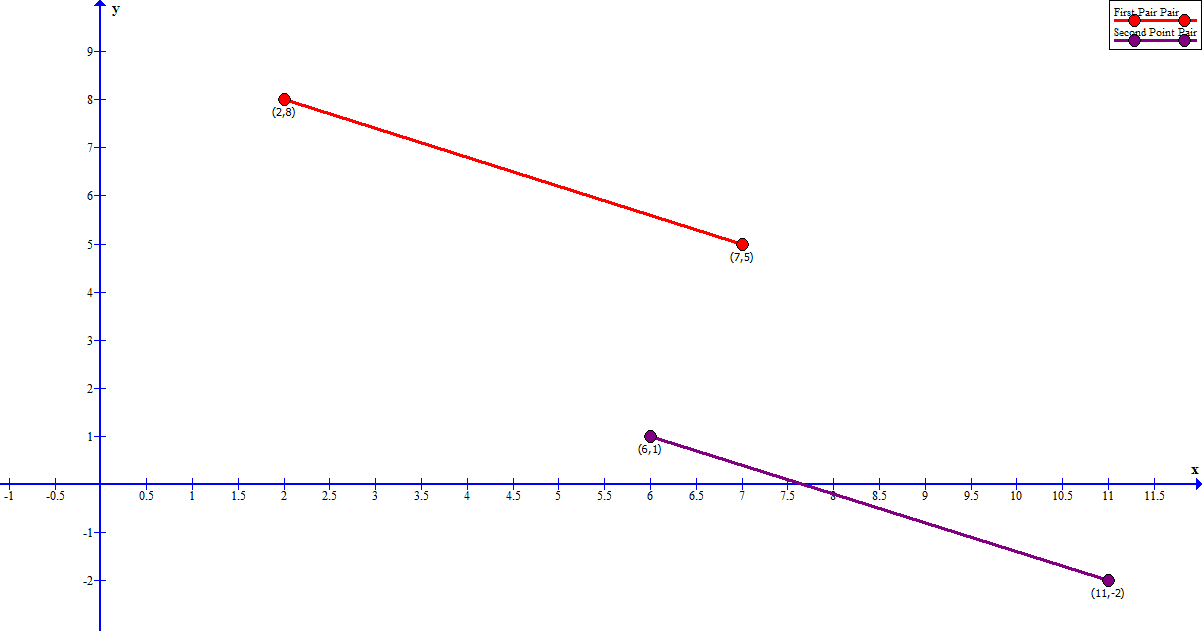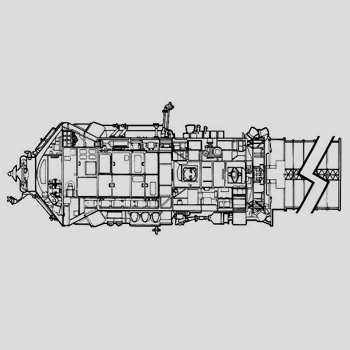A line passes through #(2 ,8 )# and #( 7, 5 )#. A second line passes through #( 6, 1 )#. What is one other point that the second line may pass through if it is parallel to the first line?
2 Answers
Explanation:
Parallel lines have equal slopes, so the first step is to find the slope of the line which passes through (
Substitute the known coordinates:
Remember that slope is "rise over run", so the numerator of the slope can be added to the
So,
Explanation:
Slope of line through
This means that a change
So


